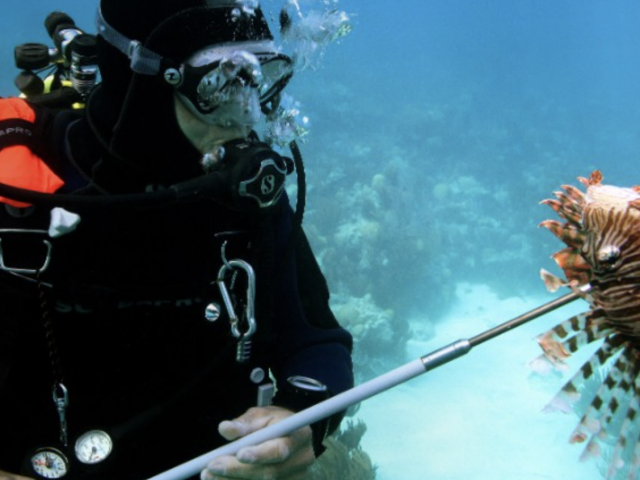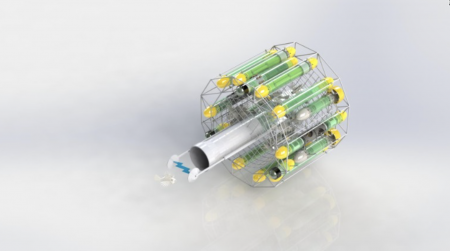
Lionfish can reduce a flourishing coral reef to a wasteland in a matter of weeks. Native fish, unfamiliar with the new arrival, do not know to avoid it, and the predator gorges to the point of obesity.
The Lionfish sits at the top of the food chain, unthreatened by any other creature. They breed rapidly, and are extremely resilient and adaptable. No solution has been found to control their advance yet, but conservationists could soon have a new tool at their disposal: killer robots. Enter iRobot CEO Colin Angle, who met with Bermudan conservationists and learned about the extent of the damage caused by lionfish.
One of the group suggested that he create a machine to kill the fish, and another offered to provide funding. Angle returned home and wrote a proposal, which swiftly became the non-profit company “Robots in Service of the Environment (RISE).” The design for a lionfish killer combines a remotely-operated vehicle (ROV), using technology which iRobot had developed for the automatic vacuum cleaner Roomba, with an attached electrocution device.
Local scientists believe the machines could play a critical role in restoring the health of marine ecosystems. If the robot is successful, it could have a major impact on our ability to manage this invasive population.
Prototypes of the robot are undergoing tests to assess how many fish can be killed, power requirements, and variations of the design. The trials will continue for the next year, before the first commercial models are assembled and sent out to hunt. Rizzi says the company is fully focused on the lionfish project, but similar designs could be used to cull other nuisance species in future.


